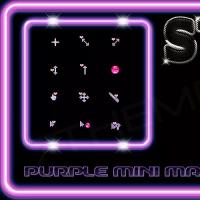Metal detectors types main characteristics. Metal detector. Types and work. Application and features. Types of MD by purpose
Modern metal detectors work on the principle of sounding the soil with electromagnetic radiation. Moreover, the presence of a metal object changes this radiation, for example, its frequency. The simplest metal detectors use only one operating frequency. More advanced devices simultaneously operate at several frequencies, and can also switch to work in different modes. The main characteristic of a metal detector is sensitivity. Also often important is the ability of the device to distinguish between types of metals. Then it would be more correct to call them metal detectors. There are several types of metal detectors:
Simple ground metal detector
Such devices are widely used for short-range search for small metal objects on the beach or under the forest floor. They use a single operating frequency (optimally 100 kHz or less for ground). The detection principle is based on the frequency deviation of the search generator. As a result, beats appear - a difference signal that is captured by the processor. Often such devices do not have a display and give only an audible signal. Sometimes they have a built-in metal type analyzer: black / non-ferrous. Sensitivity allows you to detect a coin at 3 - 5 cm from the search coil. Sewer manhole - 60 cm. Metal type analyzer is often missing. However, it can be implemented with an indication on a numerical scale.
Metal detectors with one operating frequency can be made by amateurs. Simple metal detectors are recommended for beginners. They are in the lowest price category of search devices.
Semi-professional metal detectors

They differ from simple ones in a multi-frequency range. If in a conventional metal detector there is only one sounding frequency emitter, then in a semi-professional one there may be several. The same detected metal object changes the field of several generators to varying degrees. Thus, it is possible to increase their sensitivity, especially to small objects. They confidently detect a coin from 10 - 15 cm.
The cost of semi-professional metal detectors is two to three times higher than ordinary ones. They are recommended for those who have experience in operating simple devices, you can see the options for such devices on the website - http://pro-spec.ru/catalog/sredstva-i-sistemy-bezopasnosti/poiskovo-dosmotrovoe-oborudovanie/metallodetektory-i-metalloiskateli /gruntovye-metalloiskateli.
Professional metal detectors
Always work on a multi-frequency principle. They have many switching modes. (At the same time, various combinations of sounding frequencies are switched on). This makes it possible to judge the contours of the found object. Calculate its mass and depth. The metal detector adjusts to the properties of the ground. Its element base is made completely digital on microprocessors. Almost always there is a display and all other types of indication.
The operating frequency is selected depending on the nature of the search. For small items use a high frequency. A deeper search is carried out at lower frequencies. The most advanced devices allow you to detect a coin from 20 - 25 cm. A manhole cover - 1 m. They simultaneously use 28 operating frequencies. A fairly powerful microprocessor is needed to process this amount of responses.
Sounding frequencies detect an object according to various principles: beats (resonance breakdown), induction balance of two generators, and others. Technologies using low frequencies for search are especially promising. They are known to have the highest permeability. Another direction is the registration of changes in the phase characteristics of the radiation of the search generator.
The main disadvantage of professional metal detectors is their high price. A device with good performance costs almost as much as an economy class car. Also, the devices require adjustment to the ground, which is difficult for beginners to carry out.
Metal detectors for gold
Usually they are a specialized version of a professional metal detector. They have the same price range. This type is recommended for searching for objects made of gold and non-ferrous metals in places heavily contaminated with metal household waste.
Deep metal detector
If all the metal detectors considered earlier work on the principle of changing the sounding frequency (induction metal detectors), then deep-seated devices have a principle of operation similar to an echo sounder. The device uses an electromagnetic wave generator of sufficient power to conduct sounding at a depth of 5 - 6 meters. Its signal is perceived by a sensitive receiver. Such metal detectors allow you to detect massive metal objects at the maximum depth. However, small objects, even if they are almost on the surface, do not fall into the field of view of the device. Typically, the criterion for the minimum dimension of an object should be at least 10 x 10 cm.
To save battery power and increase the efficiency of sounding, pulse generators are used.
Such devices are rarely used in amateur practice, since there is no need to search for large objects at great depths. Basically, they are used to search for pipelines, cables and lifting structures. Sometimes they are needed in archeology.
How to choose a metal detector
Every novice treasure hunter is interested in the question of choosing the best device for searching. Which model is better to buy? How to choose the best metal detector? What to look for when buying?
It is quite difficult to make a choice on your own, because devices of this kind have different directions, some are designed for deep searches at a level of several meters, others can be sharpened for a specific metal or search for coins.
Undoubtedly, there are universal metal detectors, but with them it can be difficult to search for surface objects, such as coins. The article will help you decide on the choice and approximate cost of a metal detector.
Varieties and models
There are three types of search devices:
- Underwater. They are great for searching in the coastal zone, but on land the quality of the search is noticeably reduced.
- Deep. The search for deep-seated metal structures is more suitable for builders to search for underlying communications.
- Ground. The best option, focused on shallow depths.
In the future, we will tell you how to choose the best metal detector for searching for coins and treasures.
Characteristics of metal detectors

The first thing that most buyers pay attention to is the search depth, this approach is only partially correct, as we have already figured out, devices with a long search distance are not very necessary for an ordinary searcher.
More precisely, you can find out about the possible depth of occurrence by examining the composition of the soil in order to detect the degree of mineralization. The higher the degree of mineralization, the closer to the surface are metal objects.
Soil moisture partially affects the maximum depth of the search, the wetter the soil, the further the signal of the device penetrates.
Having dealt with the simplest characteristics, it is worth moving on to a more detailed study of the device. Metal detectors have the following indicators:
- Discrimination - the ability of the device to determine the type of metal. A very important function that helps to detect, for example, copper or silver coins with high accuracy. The higher the cost of the device, the more often this function is performed, but budget devices are not deprived of such a privilege.
- Pinpointer - an additional device that allows you to accurately detect the location of an object in the ground at a shallow depth;
- Number of settings. The logic of a novice seeker is sometimes based on the fact that it is worth purchasing a device with the maximum set of all possible functions and settings, so that in the future you do not have to purchase an improved model. Alas, professional metal detectors are devices that are very difficult to understand for an ordinary person, and it can take weeks or months to properly configure them and study all the capabilities of the device. It is best to buy a device with an optimal price-quality ratio and the simplest possible interface.
- Device weight. The search for coins and other treasures takes a very long time, the lighter the device, the longer you can work with it without severe fatigue.
- Tightness. This indicator is something that is also worth paying attention to, even if you are not going to dip the device in the water on the beach, wet the finder with dew or in the rain.
- Price. Sometimes some requirements for a future device may not fit into the budget. In such cases, the buyer is faced with a choice: to buy a device cheaper or to save up for a high-quality device, in the end everything is decided by the cost of a particular metal detector.
DIY metal detector
The Internet is full of sites where there is a diagram of a metal detector, which supposedly should help you assemble a metal detector with your own hands. If you have the appropriate skills, then with some inconvenience, but you can assemble your device. For example, the Pirate metal detector, which is equipped with a unified setting, the design and layout of the metal detector is very simple. Such a finder is suitable only as a children's toy, which hardly finds a tin can at a depth of several centimeters and does not come close in its characteristics even to modern devices from the budget line.
Metal detector - easy to buy

As it has already become clear, in almost 99% of cases, the price becomes the first place in choosing a metal detector.
Manufacturers of metal detectors do not limit searchers and produce devices in various price categories, ranging from the simplest devices available to any buyer to premium devices that can determine not only the size of the find, but also its approximate weight.
Metal detector: the price in stores varies depending on the world brands represented and the size of the device.
Budget models (price up to 16 thousand rubles):
- Fisher F2 metal detector;
- metal detector Garrett ACE 250;
- ACE 150 metal detector from the Garrett brand.
Devices for advanced users (price from 16 to 25 thousand rubles):
- metal detector Garrett ACE 350;
- Minelab X-TERRA 505 metal detector;
- MINELAB X-TERRA 305.
Professional devices (price from 26 to 34 thousand rubles):
- Garrett AT PRO;
- X-Terra 705 Minelab.
- Fisher F75
Premium class models (price over 35 thousand rubles):
- Minelab E-Trac metal detector;
- Minelab CTX 3030 metal detector.
Finding the best metal detector can get bogged down if the wrong priorities are set, so try to avoid the following search criteria:
- Appearance choice. Beauty has no practical use;
- High price. The most expensive is not always the best, often this approach allows you to purchase a functional device at a reasonable price, which will ideally cope with the search for coins and treasures;
- Orientation to reviews on the forums. Trying to ask professional searchers for advice is wasting your own time. Very often it is professionals who sit on the forums who do not recognize metal detectors from categories below semi-professional ones.
Coin metal detectors

Going in search of a treasure, you should first of all understand that future finds directly depend on the chosen area.
In the village, you are likely to find various household items, jewelry or placers of coins.
You can hardly count on a golden chain or ring in a forest or field, but it’s quite possible to find weapons, medals, badges or awards.
- Search for coins. Treasure hunters have a great chance to find several coins of tsarist times, made of gold or silver. High-quality metal detectors will allow you to tune in to search for coins from a specific metal.
- Gold items. The first place in terms of the frequency of finding gold jewelry is, of course, the beach. Thousands of lost earrings, bracelets and chains are not found during the holidays and remain in the upper layers of the sand.
- Weapons and awards. The places of hostilities buried a huge amount of metal in the thickness of the earth, ranging from knives and various guns, ending with awards, orders and other things that soldiers could have.
In summary, the choice of a quality search device largely depends on your goals for the future and the price you can pay for the device.
If the detector is purchased by a beginner for short outings in nature, in order to feel like a real treasure hunter or a treasure hunter with a lot of coins, then you should not spend a lot of money on a complex and high-precision device.
You can get by with a budget option, such models in a wide range are offered by any metal detector store. Having serious plans for the future device, you should carefully read the article and choose the best metal detector based on your own budget.
A modern metal detector is a highly specialized device designed for non-contact detection of metal and metal products by capturing secondary signals by radio waves. When the device is turned on, an electromagnetic field is created in a certain range that propagates into the environment: earth, stone, water, wood, air. On metals that fall within the coverage area of the metal detector coil, under the influence of an electromagnetic field, eddy currents appear, creating their own secondary fields, distorting the configuration and signals of the main field, which is quickly captured by the device. The electronic device of the metal detector processes information and signals the presence of metal.
First of all, before acquiring this complex, functional apparatus, it is necessary to decide on the following number of questions:
- The main goals and objectives that a metal detector will have to solve
- Instrument type
- Price category
Advice! The difference between expensive and cheaper models is only in the emission of radio waves, the ability to capture and process secondary signals. More expensive instruments have a higher degree of detection of metal before it is extracted, can immediately determine its depth and other additional information.
The main types and features of metal detectors
According to the scope, functional purpose and load level, all modern metal detectors are divided into the following types:
Universal devices. Designed to search for small items (coins, nuggets and jewelry) in the ground at a depth of up to 50 cm and large finds at a depth of up to 1.5 m.
Specialized devices. Each type of device is intended for highly specialized work, has its own design features and functional purpose, according to which all specialized metal detectors are divided into:
- deep
- underwater
- artisanal
- construction
- security devices
Universal devices
The most demanded group of metal detectors is universal devices, which, depending on the set of functions and cost, are divided into the following groups:
For beginners . Devices of this class are designed to solve simple problems. These are dynamic variants of the TR/VLF models, i.e. metal detectors that require continuous movement of the head. The dynamic principle of operation of these devices provides the following advantages:
- Automatic detuning from the "average" ground
- Ease of use, plug and play
- High reliability associated with the simplicity of the device
Disadvantages of metal detectors for beginners:
- Low sensitivity
- Inaccurate object localization
- Reduced sensitivity or false positives when working on "difficult ground".
Middle class. Adjustable for static and dynamic operation. They have high sensitivity and excellent resolution. Are completed with several search heads of replaceable type and different diameter. The number of control functions can reach up to 8. Therefore, setting up and working with such a device requires certain skills and time.
Computerized. They can independently decide on the nature of the find with the help of a powerful built-in microprocessor. Equipped with a convenient and multifunctional LCD screen (or arrow indicator) and a minimum number of touch keys for programs.
The main characteristics of specialized metal detectors
Depth instruments
The method of searching with deep metal detectors differs from other devices in the following features:
- Ground scanning is carried out not by oscillatory movements of the head, but by holding the metal detector parallel to the ground, with a search strip coverage equal to the width of the coil (25 cm).
- This type of metal detector cannot be checked indoors due to the reflection of electromagnetic waves from walls and household appliances.
- Devices of this type work well above the ground, however, searching in dug trenches, pits, grottoes, caves is hampered by complex signals.
- Depth instruments do not respond to small objects located at a shallow depth, and do not distinguish between metals.
Underwater instruments
They can withstand immersion to a considerable depth (about 90 m), in fresh or salt water.
Advice! For periodic diving to a shallow depth (shallow water), almost all types of the above metal detectors are suitable. However, for permanent work in the aquatic environment and diving to a considerable depth, it is necessary to use only a specialized device.
Prospecting devices
This type of metal detector is mainly designed to search for gold. Modified pulse-type devices have gained wide popularity, allowing you to effectively search for the smallest gold items on beaches and shallow waters.
Building communication devices
These special metal detectors are designed to solve specific tasks that are not possible with traditional detectors. Are applied to search of a cable, pipelines and other underground communications. This group includes devices for searching for iron, which differ from induction metal detectors. Among the special devices include magnetometers for searching for iron.
Devices for the security service
Security metal detectors are divided into hand-held screening devices, stationary detectors and devices for checking mail.
- Manual screening devices are designed to search for weapons and various prohibited items hidden in luggage or under clothing.
- Stationary detectors are arch-type devices installed in entrance or walk-through areas to let visitors through while monitoring hidden metal.
- Mail detectors are automatic conveyor-type devices designed to search for unauthorized attachments and explosive parts in letters and parcels.
Today, buying a metal detector for any purpose is not a problem. Many experts advise purchasing a device of well-known brands, arguing that in the future it will be easier to work with the device according to the instructions and it will be easier to select components and spare parts. The following brands are in the ranking of the most popular metal detector models: AKA, Garrett, Minelab, Fisher and Whites.


In amateur and professional search practice, great importance is attached to the equipment used in the process of work, represented by a metal detector of one class or another. It will be useful for all those who dream of assembling this device with their own hands to understand the principle of operation of a metal detector, as well as to find out what main parts it consists of.
What is a metal detector
It is customary to call a metal detector a special electronic device, through which it is possible to find metal things and products hidden in opaque media. The latter may be:
- Soils of any quality and composition;
- Walls of buildings and structures made of materials of various types;
- The thickness of liquid and aqueous media, as well as the bodies of living beings and much more.
There are many types of metal detectors that differ in their design and method of forming a sensitive electromagnetic field. With their help, it is possible to organize the search for products invisible in the ground from a wide variety of metals, including copper, aluminum and rusty iron. To master the technical methods of handling this device, first of all, you need to familiarize yourself with its device and understand the principle of operation of metal detectors.
Components and their purpose
In order to understand how metal detectors work, first of all, you should familiarize yourself with those components and parts that ensure their performance.
Classic devices for searching for metal products include the following main components:
- Electronic circuit with sensitive inductive sensors (coils);
- Handle-holder, consisting of a set of rods, on one of which a sensitive sensor is mounted in the form of a frame;
- A control unit with an amplifying module and display elements (forming an audio signal), mounted on the opposite end of the holder.

Let's look at each of the components listed above in more detail.
Electronic sensing circuit
This part of the metal detector consists of two types of coils used as sensitive sensors: receiving and transmitting. It is made in the form of a plastic structure, resembling an ellipse or oval in shape, connected directly to the control unit using a signal cable.
Note! To arrange such a connection, as a rule, a special connector is used, which is easily opened if necessary (for repairing an amplifier or sensor system, for example).
The fastening of the contour on the body of the rod is carried out by means of lugs, which in their appearance resemble clamps with fixing bolts. To prevent moisture and dirt from getting inside the coils, they (as well as their joint with the cable) are made completely sealed.
The holder rods are made of metal or plastic hollow tubes designed to mount the search coil with the ability to adjust the angle of inclination with respect to the surface being examined. There is a special mechanism on the lower rod that allows you to adjust the position of the console in height (by changing the length of the overlap with the middle tube).
The middle bar plays the role of an intermediate link connecting the two extreme parts of the handle-holder. It provides docking of the lower pipe with the search frame and the upper section of the pipe with the control unit fixed on it. In some models of metal detectors, a holder is used, which includes only two rods.
The upper part of the product for ease of carrying and handling the device is sometimes made in the form of a curved S-shaped holder used as a comfortable armrest.

Control node
This part of the metal detector is located in close proximity to the operator and contains a module that ensures the operation of the entire device as a whole. With its help, the functional processing of the signals coming from the sensors is carried out, as well as their output to a special display.
Additional Information. In the simplest and outdated models of metal detectors, a conventional dial indicator is used as a display panel.
In most modern products in the same module there is a battery compartment with batteries placed in it.
Types of metal detectors, principle of operation
All known samples of metal detectors are divided into the following types according to the features of the device of the electronic sensitive sensor:
- Detectors operating according to the "reception-transmission" scheme;
- Induction type devices;
- Devices with impulse processing of useful information.
Most of the well-known models of detectors related to products of the middle price category are devices that operate according to the “reception-transmission” scheme. The principle of operation of their search devices is based on the generation and reception of electromagnetic radiation of a certain frequency. The basis of the sensitive frame of such a device is two inductive coils, one of which is a transmitter, and the other is a receiver (it is also called a search coil).
The first of them emits e / m waves penetrating a neutral medium and reflecting from metal objects that appear in the path of propagation. A sensitive search (receiver) coil captures the reflected signal, which is then amplified and fed to the executive part of the circuit. The module located in the control panel converts the received signal and displays the measurement results on the LCD display.

The principle of operation of devices with an induction type detector is similar to the algorithm already described above, but has one significant difference from it. It lies in the fact that in this case the function of the receiving and transmitting circuits is performed by the same coil.
Note! A feature of the functioning of the considered models is the dependence of their sensitivity on the state of the soil. A significant content of various impurities in it (salts, for example) causes a weakening of the reflected signal and its masking against the background of interference.
It is for this reason that devices of this type are carefully adjusted before starting work by choosing the measurement mode, adjusted for the quality of the studied soil area.
Unlike the samples considered earlier, pulse metal detectors are not so sensitive to the composition (mineralization) of the soil itself. The design of the search frame is based on the same principle as in the inductive coil. However, in this case, with its help, impulse actions are generated that create so-called “eddy currents” on the surfaces of metal products.
It is these electromagnetic formations that are the response for the receiving coil, which captures the reflected signal.
Important! This principle of detecting metal objects does not allow to effectively identify various types of metals, which significantly limits the capabilities of the detector.

Thus, according to the principle of metal detection used in a sensitive sensor, all known types of detectors can differ markedly from one another. These differences must be taken into account when choosing the right product for a specific application.
Preparing for work (tuning)
The main point of preparing any device for operation is the so-called "detuning from the ground", which allows you to maintain the sensitivity of the device at the desired level (regardless of the condition and quality of the soil). This procedure is mandatory for models with analog characteristics of the search signal, operating according to the "reception-transmission" scheme. For pulsed devices, it has certain specifics associated with the choice of detuning method.
The need for its implementation will be explained by the characteristics of the studied soils, which in the vast majority of cases are iron-containing, that is, causing the reaction of the device. In this regard, the signal reflected from such soils can have an amplitude hundreds of times greater than the useful pulse, so it is almost impossible to detect metal in the usual mode.
To eliminate this effect, developers use a phase component that does not change during the squeak (the phase shift always remains constant). With its correct detuning, it is possible to achieve a state in which no manipulations with the inductive loop, including raising and lowering it, will not cause a change in the readings on the instrument panel. It will be possible to say about such a metal detector that it is well tuned from the ground.

According to the method of carrying out this operation, all known samples of detectors are divided into models with manual and automatic detuning.
Manual
Most pulse search instruments have a built-in manual ground balance system. This means that when choosing an operating mode, the operator must independently rotate a special knob until a characteristic click or buzzer appears in the headphones. It is very difficult to use manual mode if the integrator time constant (ITT) of the electronic circuit is very small, as a result of which it is deliberately increased in many digital devices.
Note! The same effect can be achieved if the frame is moved very slowly when searching for metals.
There are no problems with the choice of the required mode in situations where the impulse principle is used in underwater search conditions, since it is physically impossible to move the coil quickly in a dense environment. Approximately the same effect, but with a slight correction for sensitivity, is observed during work carried out in the coastal zone.
Automatic
This type of device sensitivity tuning provides certain advantages in situations where the search is carried out on the seashore or soil with a high salt concentration. It allows you to operate the detector at the maximum limit of its sensitivity without the need to correct it.
The use of the automatic mode helps to increase the stability of the device and improves its noise immunity (due to the large values of the gain built into the operational amplifier circuit). In order to avoid setting failures when handling such a metal detector, you should move its frame without delay, that is, continuously.
At the end of the review, a few words about the use of devices with a pulsed method of generating a search signal. Many consider these devices to be a search tool with limited capabilities, since they are not suitable for work in urban areas (due to large amounts of iron-containing debris). The main scope of their application is the search for archaeological artifacts in the countryside, characterized by the absence of large accumulations of ferromagnetic components.
Video
FEDERAL STATE GENERAL EDUCATIONAL INSTITUTION OF HIGHER PROFESSIONAL EDUCATION.
ULYANOVSK HIGHER AVIATION SCHOOL OF CIVIL AVIATION (INSTITUTE)
FACULTY « TRAINING OF AVIATION SPECIALISTS»
CHAIR « ENSURING AVIATION SECURITY»
"APPROVE"
Head of the Department of OAB
Professor V.M. Ilyin
Associate Professor Verbitsky Yu.A.
LECTURE
by academic discipline
"Organization of inspection"
TOPIC 4. Technical means of inspection.
Lecture 4.1. General information about metal detectors.
Discussed at a meeting of the Department of OAB
Protocol No. dated "" 2011.
Ulyanovsk 2011
Introduction
Study questions
1.Technical characteristics of metal detectors.
2. Principles of operation of a metal detector.
Conclusion
Literature.
Main:
1.Aviation security: textbook. allowance: at 2 pm Ch.1A.V. Dormidontov, S.I. Krasnov, N.V. Pavlov; under the general editorship of S.I. Krasnova, - Ulyanovsk: UVAU GA (I), 2009. _ 192s.
2.Aviation security: Proc. allowance: under total. ed. Yu.M. Volynsky-Basmanov, - 2nd edition, revised. and additional - M.: - M.: NTC "ABINTEKH", 2005. - 800 p., ill.
Educational and material support.
1. Visual aids.
2. Technical teaching aids.
3. Applications.
Introduction
At present, devices that solve the problem of detecting conductive objects in a non-conductive medium using magnetic methods are widely used in various fields of human activity. Metal detectors (metal detectors, metal detectors) are used today in flaw detection (search for metal inclusions in various materials), ore electrical prospecting, in access control systems, theft prevention, etc.
The need to create inspection equipment arose after a series of terrorist attacks, the seizure of aircraft and other vehicles, which caused not only material damage, but also human casualties. There was a need to control passengers, their hand luggage and luggage in order to prevent the possibility of carrying weapons, explosives and other items that could be dangerous.
Technical characteristics of metal detectors.
According to their tasks, inspection equipment is divided into three groups:
- x-ray television introscopes that allow viewing the contents of hand luggage and baggage in order to visually detect dangerous objects on the television monitor screen;
- stationary arched metal detectors that allow checking people passing through them in order to detect metal objects in them that are not presented for open visual inspection and hidden in clothes. The presence of such objects is determined by sound and light signals;
- portable metal detectors that allow you to quickly determine the location on a person or in any package, including mail, of metal objects that, in size, may correspond to dangerous objects.
These groups of inspection equipment, when used simultaneously, allow for effective control of the flow of inspected objects.
Metal detectors (metal detectors and metal detectors are designed to search for metal-containing objects hidden in clothes, shoes or on the human body.
They are used in airports, banks, government offices, nuclear power plants, customs, enterprises, factories and other facilities.
According to the method of inspection, metal detectors are divided into portable (manual) and stationary. The first are used mainly for individual inspection. For mass inspection of a large passenger flow, the latter are more practical.
The ability of a metal detector to solve various problems when detecting metal objects allows us to classify metal detectors according to their application. The definition of the search object allows you to select the class of the metal detector. Metal detectors (MD) for personal screening can be classified as follows:
Arched MD general purpose (designed to detect metal weapons);
- arched MDs of increased sensitivity (designed to detect sufficiently small metal objects);
- arched MDs of very high sensitivity (designed to detect objects made of non-ferrous metals weighing from a few grams);
- manual MD (used in all the above cases as an independent device, and an additional localizing device when used in conjunction with arched MD).
Items prohibited from being carried by visitors to protected facilities and detected by a metal detector (hereinafter OP - search objects) primarily include:
Firearms;
- hand grenades;
- knives,
The functional purpose of metal detectors in the general case is quite wide: from the search for non-ferrous metals weighing ~ 1 g to the detection of objects made of ferromagnetic metals, significantly exceeding the OD in mass.
The tasks that metal detectors solve in protection and security systems are narrower and have their own characteristics that determine the specific requirements for such devices. These include:
Reliable OP detection;
- ensuring selectivity in relation to metal objects allowed to be carried to a protected facility;
- ensuring noise immunity in working conditions at checkpoints;
- providing special security.
 Download Digger Online cheats Download cheat for digger online cop nask
Download Digger Online cheats Download cheat for digger online cop nask Windows design Skins for the mouse cursor on windows 10
Windows design Skins for the mouse cursor on windows 10 How to create a poll in Odnoklassniki?
How to create a poll in Odnoklassniki? How to cancel a sent message in VK - cancel sending
How to cancel a sent message in VK - cancel sending How to restore a VKontakte page after deletion and return access to it
How to restore a VKontakte page after deletion and return access to it What are vkontakte communities
What are vkontakte communities How to repair a flash drive and recover data USB flash drive is not detected detailed instructions for recovery
How to repair a flash drive and recover data USB flash drive is not detected detailed instructions for recovery